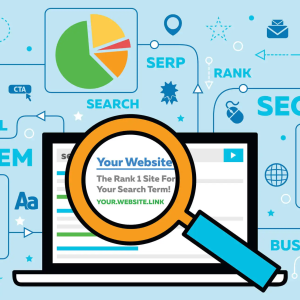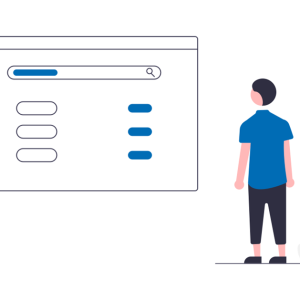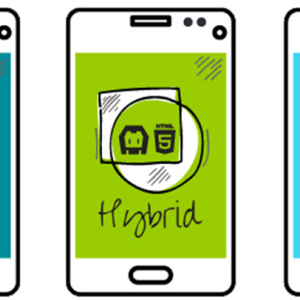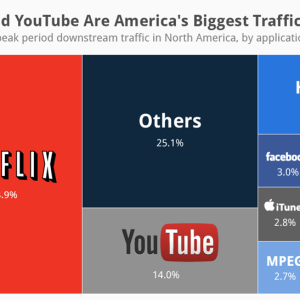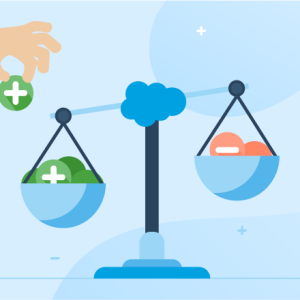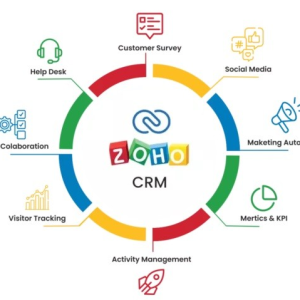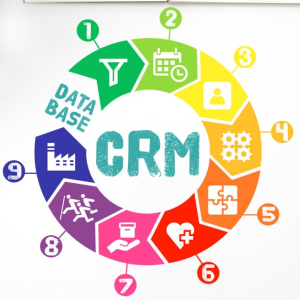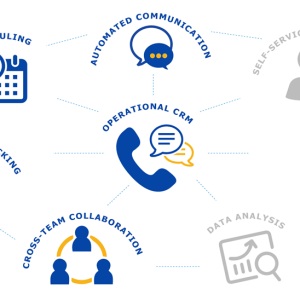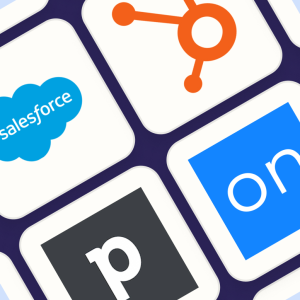Introduction
Creating a website can be an incredibly rewarding experience, but it can also be difficult and frustrating if you don’t know what you’re doing. In this guide, we’ll teach you everything you need to know about the dos and don’ts of website development. We’ll cover everything from website development to designing your website to launching it to the world.
Website Development #1. What To Consider Before Starting A Website Development Project

Before you start your website development project, there are a few things you need to take into consideration. These include: The do’s and don’ts
The Do’s Before Starting A Website Development Project are:
1. Do your research: Researching before diving into website development will help you understand the process better and give you a clear idea of what you need to do.
2. Do create a sitemap: A sitemap is essentially a map of your website that outlines all the pages and content on your site. Creating a sitemap will help you organize your thoughts and make sure that your website is easy to navigate.
3. Do use a content management system: A content management system (CMS) will make developing and managing your website much easier. Content management system tools like WordPress and Joomla are user-friendly and come with a host of features that make website development a breeze.
4. Do choose the right hosting: Your hosting provider will play a big role in the performance of your website. Make sure to do your research and choose a reputable hosting company that offers fast speeds and uptime.
5. Do test your website: Before you launch your website, it’s important to test it out to make sure everything is working as it should. You can use a tool like Google Analytics to track your website’s performance and identify any areas that need improvement.
The Don’ts Before Starting A Website Development Project are:
1. Don’t bite off more than you can chew: Website development can be a time-consuming and challenging process. Don’t try to take on more than you can handle by biting off more than you can chew.
2. Don’t skip the planning stage: Planning is an essential part of website development. Skipping this stage can lead to a chaotic and disorganized website.
3. Don’t forget about Search Engine Optimization: Search Engine Optimization (SEO) is vital for getting your website seen by potential visitors. Don’t forget to include SEO in your website development process to make sure your site is visible to search engines.
4. Don’t neglect the design: The design of your website should be given just as much attention as the website development. A well-designed website will be more user-friendly and engaging, which can lead to more conversions.
5. Don’t forget to test: As we mentioned earlier, testing is essential for ensuring that your website is functioning properly. Don’t launch your site without first testing it to avoid any potential issues.
Website Development #2. How to choose the right web hosting

The next important step is to choose the right web hosting for your website. Depending on the size and scale of your website, you will need to choose a hosting plan that meets your needs. For smaller websites, shared hosting plans are usually sufficient. These plans are relatively cheap and offer all the features you need to get started. However, if you’re expecting a lot of traffic to your website or if you need more control over your server, you may need to upgrade to a VPS or dedicated server.
The do’s when choosing the right web hosting:
1. Do consider your website’s future growth when selecting a web hosting plan.
2. Do choose a web host that offers 24/7 customer support in case you have any issues with your website.
3. Do select a web host that offers a money-back guarantee so you can try out their service before making a long-term commitment.
4. Do research a web host’s reputation before selecting one. Make sure they have a good track record and offer the features you need.
The don’ts when choosing the right web hosting:
1. Don’t choose a web host solely based on price. Sometimes you get what you pay for in terms of customer support and features.
2. Don’t sign up for a long-term contract with a web host before you’ve had a chance to try out their service. Most web hosts offer some sort of money-back guarantee so you can test out their service before committing.
3. Don’t select a web host that doesn’t offer 24/7 customer support. If you have any issues with your website, you want to be able to contact someone for help.
4. Don’t choose a web host without reading reviews from other customers. Make sure you know what others are saying about the web host before making a decision.
Website Development #3. Picking the perfect domain name

Your domain name is your website’s address on the internet. It’s what people will type into their browser to visit your site. For example, our domain name is www.hostgator.com. Your domain name should be unique to you and easy to remember. It’s a good idea to choose a domain name that is relevant to your business or website.
The do’s when picking the perfect domain name:
1. Do pick a domain name that is relevant to your business or website.
2. Do try to keep your domain name short and easy to remember.
3. Do choose a domain name that is unique to you.
4. Do make sure your domain name is available as a .com.
5. Do register your domain name with a reputable domain name registrar.
The don’ts when picking the perfect domain name:
1. Don’t use difficult to spell or hard to remember words in your domain name.
2. Avoid using long domain names, they’re just too hard to type out!
3. Don’t choose a domain name that is already in use by someone else.
4. Steer clear of trademarked terms or names to avoid any legal issues down the road.
When you’ve got your domain name picked out, you’ll need to register it with a domain name registrar. This is just a company that will reserve your domain name for you so that no one else can use it. HostGator is a popular domain name registrar, but there are many others to choose from as well. Once you’ve registered your domain name, you’ll need to point it to your web hosting account. This will tell the domain name registrar where to find your website.
Website Development #4. How to design your website

Designing a website is as important as the content on your website. You want to make sure it’s visually appealing and easy to navigate. The design of your website should be relative to the type of business or website you have. For example, a women’s clothing store would have a very different design than a tech blog.
There are a few things you should keep in mind when designing your website:
1. Keep the design simple and clean. You don’t want to overwhelm your visitors with too much information or too many colors.
2. Make sure your website is easy to navigate. Visitors should be able to find what they’re looking for easily.
3. Use high-quality images. This will make your website look more professional.
4. Pay attention to the little details. Small things like the font you use can make a big difference.
5. Test your website on different browsers and devices. Make sure it looks good and functions properly no matter where it’s being viewed.
Designing a website can be difficult if you’re not a designer yourself. If you need help with the design of your website, there are plenty of resources available to you. You can hire a web designer or use a web design platform like WordPress. But first, there are some things that you don’t want to do when designing a Website, and knowing these will help you create a better design.
1. Don’t use too many colors: This will make your website look like a child’s crayon drawing, and it will be very off-putting to visitors. Stick to two or three colors, and use them sparingly.
2. Don’t use too many fonts: This is another case of too much information being overwhelming. Stick to two or three fonts, and use them sparingly.
3. Don’t use complex designs: Keep your design simple and easy to navigate. Complicated designs will only frustrate your visitors.
4. Don’t forget about mobile: More and more people are using their phones and tablets to browse the internet. Make sure your website looks good and works well on mobile devices.
5. Don’t forget to test: Always test your website on different browsers and devices before you launch it. This will help you catch any errors or problems.
Building a website can be a daunting task, but it doesn’t have to be. If you keep these tips in mind, you’ll be well equipped on your own!
Website Development #5. What content to include on your website

You have created a website, designed it, and everything is going great, but where is your content? Your website is only as good as the content you put on it. The content you include on your website should be relative to the type of website or business you have. If you have a blog, your content will be articles or posts. If you have an online store, your content will be product descriptions and images.
There are some strictly do’s when considering to curate content for a website:
1. The content you create should be well written and free of grammar and spelling errors.
2. Be sure to proofread your content before you publish it.
3. Always cite your sources if you use someone else’s work.
4. Make sure your content is relevant and up-to-date.
5. Keep your content fresh by adding new articles or products regularly.
And here are some things you don’t want to do when it comes to website content:
1. Don’t plagiarize: This is a huge no-no. Not only is it morally wrong, but it can also get you into legal trouble. If you use someone else’s work, be sure to give them credit.
2. Don’t post old content: No one wants to read an outdated article. Be sure to keep your content relevant and up-to-date.
3. Don’t publish low-quality content: This will only reflect poorly on you and your website. Always take the time to create high-quality content.
4. Don’t forget about SEO: Search engine optimization is important if you want your website to be successful. Be sure to include relevant keywords in your content so that people can find your website easily.
5. Don’t neglect your social media: Social media is a great way to promote your website and its content. Be sure to post links to your website and new articles on your social media accounts.
Creating content for your website can be a challenge, but it’s important to remember the dos and don’ts. If you take the time to create high-quality, relevant, and up-to-date content, you will be well on your way to success in no time!
Website Development #6. How to promote your website
Now that you have a website and great content, it’s time to start promoting your website. There are many ways to promote a website, but here are a few of the most effective:
1. Search engine optimization: This is a process of optimizing your website so that it ranks higher on search engine results pages.
This can be done by including relevant keywords in your content and titles, and by building backlinks to your website.
2. Social media: Social media is a great way to promote your website and its content. Be sure to post links to your website and new articles on your social media accounts.
3. Email marketing: This involves sending out emails to promote your website or its content. You can build an email list by having people sign up for your newsletter, or by offering a free ebook or report in exchange for an email address.
4. Advertising: Advertising can be a great way to promote your website, but it can also be expensive. There are many different types of advertising, so be sure to do your research before you choose one.
5. Public relations: This involves getting your website featured in the news or other publications. You can do this by submitting press releases or by reaching out to reporters and bloggers who write about topics related to your website.
6. Content marketing: This is a process of creating and distributing valuable and relevant content to attract, acquire, and engage your audience. This can be done by writing blog posts, creating infographics, or producing video content.
7. Affiliate marketing: This involves promoting someone else’s product or service on your website. When a sale is made, you earn a commission.
8. Referral programs: This is a process of offering incentives to people who refer others to your website. For example, you could offer a discount to people who refer new customers to your online store.
9. Event marketing: This involves attending or hosting events to promote your website. For example, you could host a webinar or attend a trade show.
There are many other ways to promote your website, but these are some of the most effective. No matter what method you choose, promoting your website is important if you want it to be successful. Be sure to put some time and effort into promoting your website, and you’ll see the payoff in no time!
Website Development #7. Tips for maintaining your website

Even a commoner who has seen success needs to maintain his status to remain on top. And when coming to website development, you’d want to maintain your website and ensure it is running smoothly even without your presence. Here are some tips on how to do that:
1. Use a content management system: A content management system (CMS) is a software application that helps you create, edit, and publish content on your website. WordPress is a popular CMS that is used by millions of websites.
2. Regularly back up your website: Be sure to regularly back up your website so that you don’t lose any important data. You can use a plugin like UpdraftPlus to automatically back up your website.
3. Keep your software up to date: It’s important to keep your WordPress software and plugins up to date. This will help you avoid security vulnerabilities and ensure that your website is running smoothly.
4. Use a security plugin: A security plugin like Wordfence can help you protect your website from malware and hackers.
5. Optimize your website for speed: A fast website is important for both users and search engines. Be sure to optimize your website for speed by using a caching plugin and compressing your images.
6. Monitor your website traffic: Use Google Analytics to track your website traffic and see how users are finding your site. This information can help you adjust your marketing efforts.
7. Regularly check your links: Be sure to regularly check your website’s links to make sure they are working properly. You can use a plugin like Broken Link Checker to scan your site for broken links.
8. Create a website maintenance schedule: A website maintenance schedule will help you keep track of all the tasks that need to be done to keep your site running smoothly.
9. Hire a professional: If you don’t have the time or knowledge to maintain your website, you can hire a professional to do it for you.
Website maintenance is not an easy task, but it is a necessary one if you want to ensure your website is running smoothly. By following these tips, you can rest assured knowing that your website is in good hands.
Conclusion
By now, you should have a good understanding of the do’s & don’ts of website development. Website development is a complex process, but it doesn’t have to be overwhelming. By following the tips in this article, you can develop a website that is both user-friendly and successful.
Don’t forget to focus on your target audience, and always test your website before launch. Promoting your website is also important, so be sure to put some time and effort into that as well. Perhaps, if you are looking for an agency to get started, look no further than 12 Channels. We are a digital marketing agency, experts in custom website development that are both user-friendly and successful.

